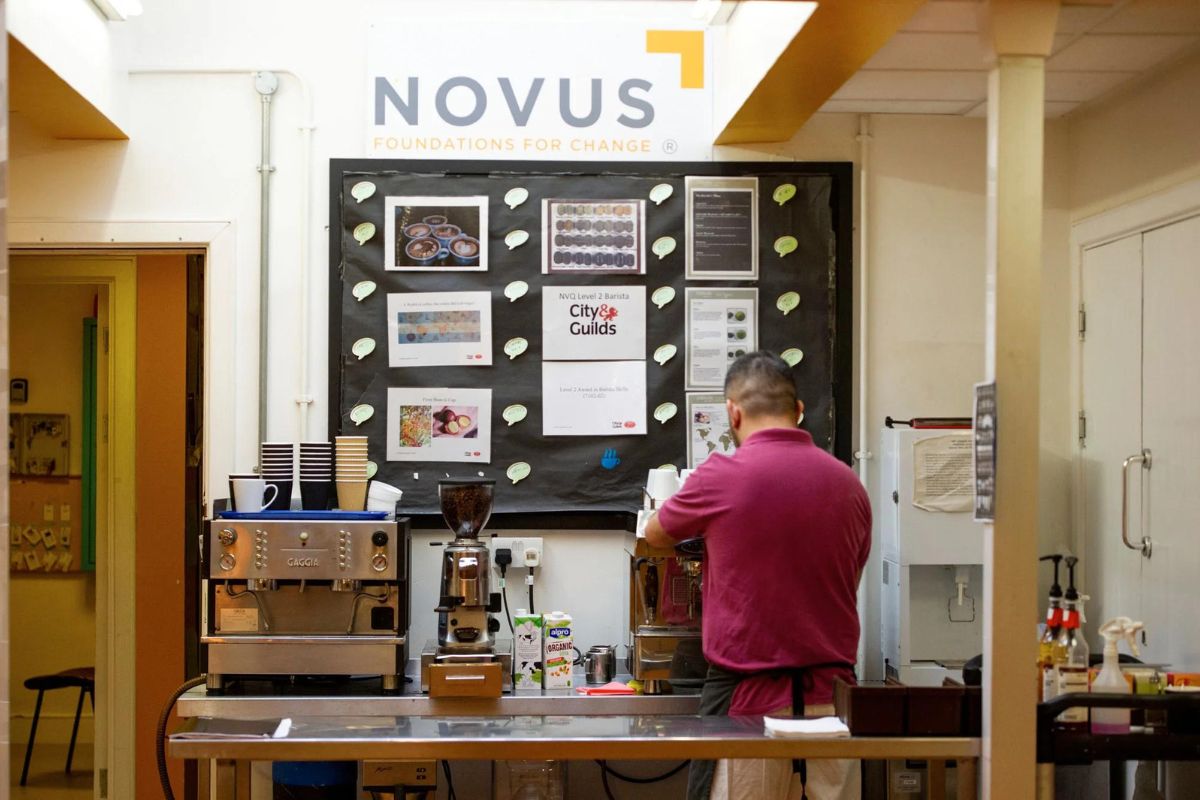Second wave of unemployment: We may be in the eye of the storm, with worse to come

#LMI – This @LearnWorkUK briefing sets out analysis of @ONS #LabourMarket statistics released this morning (15 September 2020).
The LABOUR MARKET STATISTICS – September 2020 data covers the number of people claiming benefits up to August 2020, and employment and unemployment figures for the period May to July 2020.
1. Employment overall flat, but large declines in payroll employment and 3.4 million people out of work and wanting a job
The headline employment level fell by 12,000 on the quarter. Timelier HMRC payroll employment data have fallen by 695,000 since March.
Figure 1: Employment totals from ONS and HMRC data
However, throughout the pandemic, the headline employment and unemployment figures have not provided a full picture of the labour market. The Coronavirus Job Retention Scheme has helped protect jobs, while more people out of work have been classified as inactive rather than unemployed as they have either been discouraged from seeking work by the sharp decline in vacancies and lockdown, or unable to start work because of caring responsibilities.
The picture is clearer by looking at the number of people who are out of work but want a job. Figure 2 shows that unemployment has risen only gradually, with sharper rises in the number of people who are inactive but want a job. The most recent data suggest a shift, with more people looking for work and fewer inactive but wanting a job (though still higher than pre-crisis). Though, more positively, the next biggest change in inactivity is a rise in student numbers.
Taken together, there are now 3.4 million people who are out of work but would like a job.
Figure 2: The number of people out of work and wanting a job has risen
2. There was some increase in activity over the summer
The total number of hours worked is one of the best measures of labour market activity in the current crisis. Over the summer the gradual easing of lockdown, partial re-opening of the economy and the Eat Out To Help Out scheme have meant some furloughed workers returning to their jobs. However, as figure 3 below shows, the number of hours worked per week at the end of July remained 12% below pre-crisis levels.
Figure 3: Hours worked per week has increased, but remains well below pre-crisis levels
Similarly, job vacancies dropped to below half of the 2019 average following lockdown. ONS analysis suggests that it was this reduced hiring that led to falls in employment, rather than increased job loss. There has been a gradual increase as the lockdown has eased, but the number of vacancies at the start of September was just 50% of pre-crisis levels.
Figure 4: There are half as many vacancies as before the crisis
3. With around 3 million workers still on furlough, the end of the scheme risks triggering a second wave of unemployment
The Coronavirus Job Retention Scheme has limited the rise in unemployment by protecting jobs and incomes. However, the end of the scheme could lead to a larger spike in redundancies and a ‘second wave’ of unemployment.
HMRC data show that 6.8 million jobs were furloughed at the end of June. ONS experimental estimates show 2.4 million say the reason they worked fewer hours than usual was being furloughed, though they note this could be an underestimate.
Today’s labour market statistics show 5.5 million workers are temporarily away from their work. This is higher than the 2.4 million seen before the crisis, suggesting around 3 million workers were still furloughed at the end of July.
Figure 5 – 5.5 million people were temporarily away from work at the end of July
4. Young people face a very challenging labour market
Hundreds of thousands of young people face a double whammy of a disrupted education and tough labour market, while young people have been harder hit so far than many age groups.
Claimant unemployment for young people has increased rapidly since the start of the crisis. There are 526,400 18-24 year olds claiming unemployment-related benefits, up by 124% since March and the highest figure since September 1996.
The survey measure of unemployment for this age group rose faster than for any other age group, up by 11.9% in the quarter since February to April, and now stands at 12.3% (up 1.6 percentage points).
The Government’s £2 billion Kickstart scheme, which will fund job opportunities for young people for six months, is expected to begin delivery in November with employers able to pledge places now. These data show the scale of the potential need for placements. Its success will depend on ensuring all young people who could benefit from a placement are able to access one (with a particular focus on the long-term unemployed) and making sure placements are of high quality so that they boost young people’s employment prospects.
Figure 6: Youth claimant unemployment has more than doubled
Behind the headlines, there are clear warning signs of trouble ahead: 695,000 fewer people are in payroll employment than at the start of the crisis, redundancies are now rising, and 3.4 million people are out of work and want a job.”
We may be in the eye of the storm, with worse to come. The Coronavirus Job Retention Scheme has protected jobs and the partial reopening of the economy and Eat Out To Help Out scheme provided a boost. But with around three million workers still furloughed, the end of the furlough scheme in October could see a second wave of unemployment.
We need targeted support for jobs in hard-hit sectors, and to further ramp-up employment and training support for those out of work.
Stephen Evans, Chief Executive, Learning and Work Institute












Responses